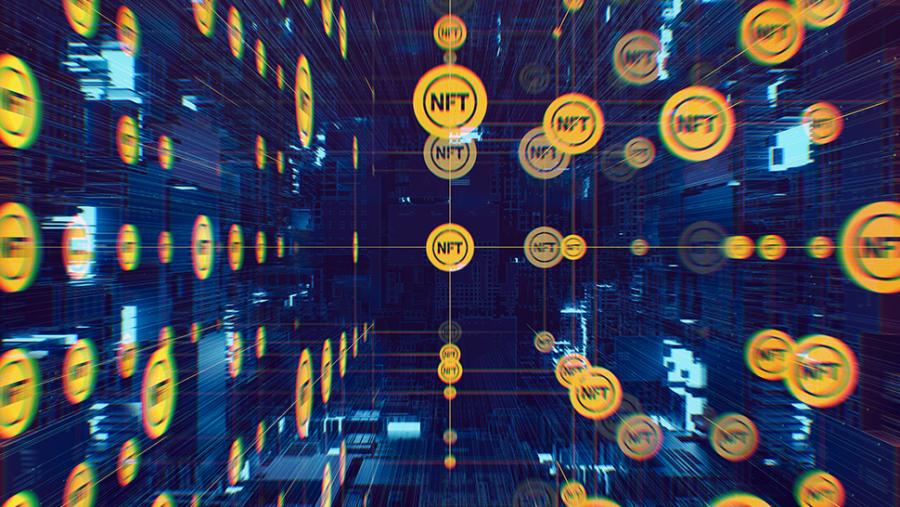

This article will explore whether the increasing trend of using CC0 copyrights on NFTs is really the best direction for the NFT market.
Quick recap – what is an NFT?
A ‘non-fungible’ token (‘NFT’) can be likened to a one-of-a-kind piece of artwork or signature. An NFT is based on blockchain units (click here to download our blockchain booklet for more information) which has a unique ID – the ‘token’ element. These tokens gain their value since they can never be replaced, even by using identical tokens, since it is not the same as the original – the ‘non-fungible’ element).
Putting this together, an NFT is a digital asset based on blockchain that is so unique in kind that it cannot be replaced even by identical tokens due to its unique ID and coding.
An NFT with a CC0 – what and why?
A ‘CC0’ is a form of copyright which reflects the artist’s wishes that there are no rights to be reserved and they do not claim a copyright – removing legal protections. It stands for “Creatives Commons” or “no copyright reserved” so the complete reverse of the normal legal position for copyright.
In essence, if an NFT has a CC0 status, it means the creator has decided to enable others to use their NFT freely, in an unrestricted manner, and they no longer have control over the NFT’s usage. It acts in a similar manner to a royalty-free image – anyone can use them without needing to give credit to the original artist.
Using a CC0 copyright with an NFT poses significant creative opportunities, but this is not to say it does not come without drawbacks.
A new creative arena – the benefits
- One argument for using CC0 copyrights is that it makes the original NFT more valuable. Like with anything, if there are ‘dupes’ in circulation, the desire to have the ‘real deal’ becomes all the more appealing. Applying this principle to NFTs; if people like the NFT and can see it is increasingly popular in circulation, having the ownership of the original will entice a market of collectors who may previously not have been interested.
- In addition to this, with the design being copyright-free, it encourages other artists to create various different forms and interpretations of the original without being concerned about facing legal battles for IP infringements – depending on the exact terms of the copyright. Furthermore, there is nothing to prevent derivates of the original CC0 NFT having a copyright which can create more value in both the original and derivative version.
- Successful examples include CrypToadz which was developed by the artist Gremplin. When reviewing the CrypToadz website, there is a clear disclaimer stating:
“To the extent possible under law, Gremplin has waived all copyright and related or neighboring rights to CrypToadz by Gremplin. This work is published from: United States”
Yet when looking at the sale price, the NFTs are still selling for figures in the region of $12,000. Another example can be seen with Moonbirds NFTs who have recently transitioned to a CC0 position mid project, and their NFTs are still selling in the region of $25,000.
Drawbacks
- The appeal of an NFT is its scarcity – by reducing the level of copyright attached to the token and allowing anyone to use them, it can be argued they lose their value and become as ‘unique’ as a clipart image. By waiving the protection associated with a traditional copyright, the artist allows others to use the exact token as they please, so reducing the unique nature of the token and detracts from the ‘non-fungible’ underpinning of an NFT.
- While CC0-based NFTs are still selling, despite being available for us without ownership, non-CC0 NFTs can sell for millions making CrypToadz look like a drop in the ocean.
- In losing control of the exclusive IP rights, the uses and alterations to the original NFT can be detrimental to the brand if used in negative, immoral or otherwise harmful forums such as trolling or cults.
Future or fad?
The desirability of owning NFTs is their scarcity, like classic cars. This is what ensures they retain their value and appeal. If the investment is under threat by having no IP protection, collectors may well sell these NFTs to replace them with non-CC0 NFTs to preserve the attractiveness of their collections.
I cannot agree with the principle of pivoting an NFT project part way through to become CC0, surely that cannot be fair on the artists or the NFT owners who were sold one thing but end up with sometime quite different?
While the creative opportunities cannot be denied, by removing the copyright protection afforded with NFT designs, the fundamental ‘collectible’ element of an NFT is eliminated making it potentially an unattractive free-for-all.










